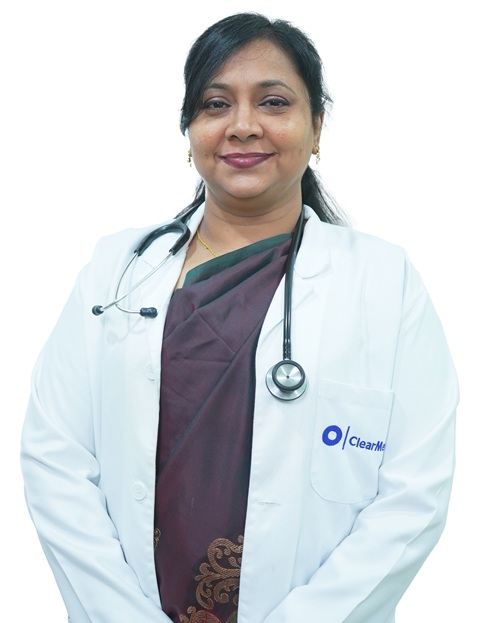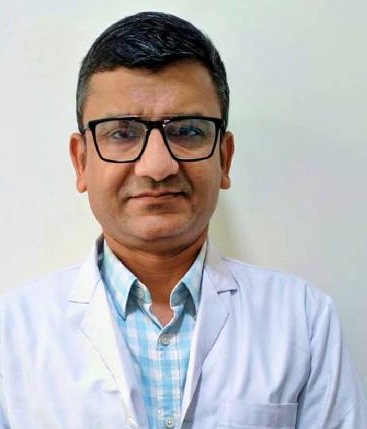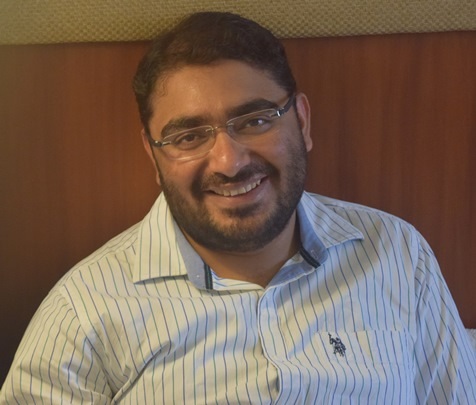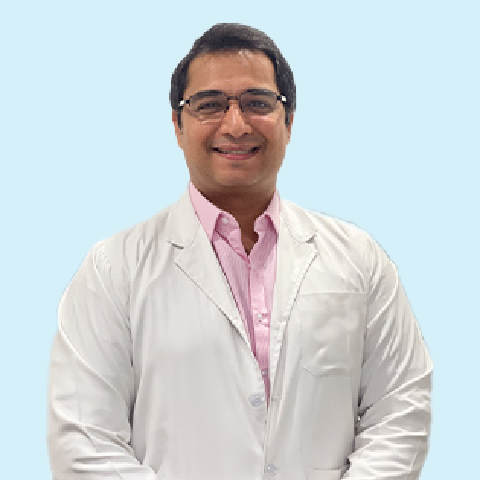Hair Transplant Recovery - Time, Process & Pictures

Quick Summary
- Hair transplant surgery is a game of patience. While it offers a quick recovery, the complete results are witnessed almost a year after the procedure.
- Before getting a hair transplant, it is crucial to understand the hair transplant recovery process. The following blog discusses the complete recovery timeline post-surgery and what you can expect in each recovery phase.
With appearance being an important factor in every person’s life, the demand for hair transplants has massively increased. Procedures like Follicular Unit Extraction (FUE) and Follicular Unit Transplant (FUT) involve removing hair follicles from the scalp or a body part and transplanting them to a bald head area.
In today’s generation, where everything is about quick gratification, hair transplant surgery is a game of patience. While it offers a quick recovery, the complete results are witnessed almost a year after the procedure. Before getting a hair transplant, it is crucial to understand the hair transplant recovery process. The following blog discusses the complete recovery timeline post-surgery and what you can expect in each recovery phase.
Recovery Timeline After Hair Transplant Surgery
The healing process starts immediately after the hair transplant surgery. The recovery after a hair transplant can take about 7 to 10 days. Following is the timeline, along with hair transplant recovery pictures, to help you understand what happens after transplant surgery.
Day 1
On the first day after the procedure, both the donor and the recipient areas on your scalp will be extremely sensitive. There are chances of a blood clot formation in the recipient area and some blood flow in the area with stitches (in case of FUT procedure). Your bandage will most likely be removed on the first day after the procedure. The following is what you should do on the first day after a hair transplant:
- Take adequate rest.
- While sleeping, keep your head elevated to avoid detaching any hair grafts.
- Do not touch or wash the surgical area.
- Cover your head while going out to avoid sun exposure.
Day 2 to Day 4
The healing of the scalp will begin on day 2. You will notice the formation of tiny crusts on the recipient area of your scalp. The pain will reduce as compared to the first day. However, you may experience swelling in your forehead or near the eye. Though it is harmless, some swelling may still cause a little discomfort. The following is what you should and should not do during this phase of hair transplant recovery:
- Take adequate rest.
- Apply hot or cold press to the swollen area.
- Do not bend over for 48 hours to avoid swelling and bleeding.
- Avoid touching, rubbing, or scratching the recipient area.
- Avoid sun exposure, as sunburn can affect skin pigmentation and damage the transplanted hair.
Day 5 to Day 7
By day seven, you should notice an improvement in discomfort, swelling, and bleeding. After adequate rest for a couple of days, the grafts will strengthen, which means they are less likely to dislodge. However, refrain from scratching your scalp, as scabs may still be present.
- You can resume regular bathing after day five.
- You can apply shampoo a little longer on the recipient area to soften the scabs.
- You can resume your normal activities and sports.
- Avoid strenuous physical activity for at least four weeks.
Day 10
Most of the healing crusts disappear ten days after the procedure. Moreover, hair growth becomes noticeable in the recipient area.
- Regularly wash your head for the crusts to peel and fall off naturally.
- Avoid bad weather conditions to prevent a negative impact on your hair.
- Take special care while combing to avoid hair damage.
- Do not use hair products or dryers for two weeks after the surgery.
- Do not consume green tea and coffee for at least ten days.
Your head should be healed and scab-free ten days after the surgery. Even after the hair transplant recovery time, the results can be observed for up to a year post-operation.
Day 11 to Week 4
The newly transplanted hair will fall off during this phase, called the resting period. The shedding of hair is also known as shock loss. Being a part of the natural lifecycle of a hair follicle, shock loss is not something to be worried about. The follicle itself remains healthy and grows within a few weeks.
- Continue washing your hair normally.
- You can resume rigorous physical exercises and full sports activities.
Month 2 to Month 3
Usually, your hair loss will end two months after hair transplantation, and new healthier hair follicles will begin to grow. However, it may not have the expected thickness and texture. In the case of a FUT procedure, the scar will shrink to its final shape and size during this period. Be careful of blisters and infections that are caused by sensitive skin.
- Consult your surgeon if you experience signs of an infection.
- Follow all the post-operative instructions and take monoxide, finasteride, or other recommended treatment for minimising shock loss.
Month 4 to Month 6
At this stage, hair growth will be better in thickness and texture. While some hair may not be pigmented, the hair structure will continue to improve in terms of pigmentation and strength in the following months. About 50% to 60% of new hair will grow during months four to six.
- Wear a cap while going out to avoid sunburn in the recipient area.
- Also, use a strong sunblock SPF 30 while going out in the sun.
Month 7 to Month 12
You will witness the most remarkable difference in your hair between these months. The hair will become much longer and thicker. About 80% to 90% of hair growth is observed in this period.
- Visit the doctor to monitor your hair transplant recovery and progress.
- You can also style your hair as you desire.
Month 12 to Month 18
During this period, the final results will be visible clearly. You will observe 100% of hair growth in approximately 18 months duration.
Please Note: The hair transplant recovery time varies depending on individual genetics. Moreover, recovery can also differ based on the procedure used and the location of transplanted hair. For example, hair in the frontal region grows faster because of the presence of blood vessels and arteries that promote hair growth.


Hair Transplant Side Effects
While hair transplant is a comparatively safe procedure, it has some side effects like any other surgery. Some immediate side effects after the surgery include:
- Pain: You might experience pain for a couple of days after the procedure, especially in the donor area. If the pain persists, consult your doctor immediately. Over-the-counter pain relievers can help you manage post-hair transplant surgery.
- Itching: It is common to experience some itching all over the scalp a week or two after the hair transplant. In most cases, itchiness is an indication of recovering tissue. However, if it worsens, you can take an antihistamine drug only after consultation with your doctor.
- Swelling: Swelling is your body’s natural reaction to an injury or trauma and one of the most common side effects of a hair transplant. After surgery, you may experience swelling on your forehead and around the eyes for two to five days. Apply a cold press on the swollen area to minimise the symptoms. Moreover, keep your head elevated and avoid sleeping on your stomach. The doctor may also give you a drug called dexamethasone to reduce swelling.
- Bleeding: Bleeding in the area where the grafts have been implanted is normal on the day of the procedure. However, if you experience bleeding even after the procedure, gently apply pressure (do not rub) to the area with a clean cotton bud or swab. Also, inform your surgeon, as bleeding could mean you have lost a hair follicle.
- Infections: Infections are the most common side effect after any surgery. The transplant should be done in a sterile surgical room to prevent infections. If you do get an infection, it can be easily treated with antibiotic tablets.
Other long-term side effects of the surgery include:
- Hair loss: Hair loss or shock loss is a normal process after a hair transplant. It starts to occur about ten days after the surgery. Once the shedding stops, new hair will begin to grow for the next 8 to 12 months.
- Scalp laxity: It refers to the skin’s ability to stretch when subjected to tension or force. The stitches in the FUT procedure limit scalp laxity for six to eight months post-surgery. However, sometimes, the damage can be permanent. Certain scalp laxity exercises can help loosen a tight scalp.
- Nerve damage: Nerve damage can happen in techniques such as FUT, where the depth and area of the wound interfere with the nerves. It can lead to temporary (six months) or permanent nerve damage.
Hair Transplant Care After Surgery
The doctor will provide some hair transplant care instructions after the surgery. It is important to follow these post-operative guidelines for FUT and FUE hair transplant recovery.
- Hair Wash
Washing hair is one of the most critical things in achieving the desired hair transplant results. You do not need to wash your head for the first four days after the transplant. Post four days of surgery, you must wash your head once or twice a day until the scabs fall out and the transplanted area becomes clean. Chemical shampoos and creams should not be used on your scalp for the best recovery. Instead, use medicated shampoos and creams as prescribed by your doctor.-
Cover the transplanted area with a lotion, oil, or moisturiser. The lotion will help soften the scabs around the transplanted and donor area, removing traces of dried blood and ensuring faster recovery. It should be used until the scabs fall off. Wash the scalp with warm water after 15 to 30 minutes. Next, lather a small quantity of special medical shampoo between your hands and apply it to your entire scalp using your palms without pressure.
-
After washing the scalp, gently pat your hair dry using a paper towel.
-
Shampoo daily to remove scabs. If required, you can wash your hair more than once a day after the procedure. No more dried blood or scabs will be left 7 to 10 days post-surgery. You can start washing your hair normally after two weeks.
-
-
Food
Eating a well-balanced diet is crucial for healthy blood flow and adequate hydration during hair transplant recovery. Nutritious food can help achieve soft, strong, healthy, thick, and beautiful hair.-
Take supplements rich in protein, iron, calcium, magnesium, zinc, vitamin B6, protein, and biotin.
-
Avoid eating fast foods, processed and packaged foods high in salt, sugar, and sweetened syrup.
-
Do not consume alcohol or coffee, as it can elevate your blood pressure levels.
-
-
Sleeping Position
You should avoid touching the recipient areas of your scalp during the first-week post-surgery. Therefore, sleep on your back with your head elevated on a few pillows to achieve this. -
Physical Activity
Immediately after the surgery, you can engage in activities that do not make you sweat. Furthermore, you can resume your rigorous exercises ten days post-operation. Ensure to take a shower after the workouts to reduce the risk of infections. -
Sun Exposure
During the first two weeks of hair transplant recovery, staying away from direct sunlight is important. Sunburns can affect skin pigmentation and damage your transplanted hair. You should wear headwear whenever outside for the first six months. Choose a headwear that is not too tight on the recipient area and does not pull on the newly transplanted grafts. -
Alcohol Consumption and Smoking
Do not consume alcohol or smoke for at least two weeks after the procedure, as it can increase the healing time of wounds.
Takeaway
You will achieve satisfying results if the hair transplant is performed in a renowned hospital or clinic with modern facilities and experienced surgeons. While FUE and FUT hair transplant recovery takes 7 to 10 days, the results can be observed for up to a year. Following all post-operative guidelines during the recovery period is important to achieve the expected results.
If you have any more doubts about recovery or hair transplant care after surgery, you can contact a HexaHealth expert TODAY! We will help you select the best hospital and surgeon for a hair transplant. Moreover, our team will provide you with assistance throughout your recovery phase.
Frequently Asked Questions
How long does it take to look normal after a hair transplant?
About 10 to 15 days after surgery, you will look normal as there will be no more dried blood or scabs on your scalp. Only a little redness might be visible after this period. You will achieve noticeable results six to nine months after a hair transplant.
What will I look like immediately after a hair transplant?
Immediately after a hair transplant, the recipient area will look slightly red, swollen, and shiny. On a closer look, you will observe thousands of little hair where the hair follicle grafts were implanted.
How does a hair transplant look after ten days?
The scabs on your scalp will fall off ten days after a hair transplant. Therefore, the hair transplant will begin to look normal after this period. Moreover, the newly transplanted hair will begin to fall off, followed by strong hair growth.
What should I do two weeks after the hair transplant
Two weeks after the hair transplant, you can sleep in your normal position. After your doctor’s approval, you can resume rigorous exercises and full sports activities. Furthermore, you can start washing your hair as you normally do.
Can you damage grafts after two weeks?
Most grafts set and become secure during the first week of hair transplant recovery. Though unlikely, it can dislodge or damage a graft after two weeks. Therefore, you must be careful while caring for the grafts.
How much area do 2000 grafts cover?
2000 grafts cover about one-third to half a head of hair. However, it does not follow a one-size-fits-all approach, and the exact area may depend on the head size and quality of the donor's hair.
When can I sleep on my side after a hair transplant
The healing process takes place 7 to 10 days after the procedure. After this period, you are no longer required to lie on your back and can return to your side sleeping position. However, do not place direct pressure on the operated area. Two weeks onwards, you can normally sleep in any position.
Which shampoo is best after a hair transplant?
You must be very careful about the products you use after a hair transplant. Some products can be harsh on your scalp and damage the hair. You must look for ingredients like biotin, keratin, copper, and zinc in your shampoo. You can also use a baby shampoo like the Johnson Baby shampoo, as it does not contain any chemicals.
Why do you wear a headband after a hair transplant?
Doctors may recommend wearing a headband four to five days after the procedure to prevent swelling on your forehead and around the eyes. Headbands also protect your sensitive skin after a hair transplant. Furthermore, they absorb the excess fluid from the transplant site and prevent direct exposure to sunlight.
When do scabs fall off after a hair transplant?
The hair transplant recovery time ranges between 7 to 10 days. The scabs usually fall off on the tenth day after a hair transplant. Make sure not to scratch the scabs, as it can cause infection and damage the grafts.
What should I not do after a hair transplant?
Certain things should be avoided for a few days after a hair transplant, which include:
- Do not sleep flat
- Do not smoke or consume alcohol
- Avoid swimming
- Avoid engaging in high-impact exercises
- Avoid using hair styling products
- Avoid direct sun exposure on the scalp
- Avoid dehydration
What foods should I avoid after a hair transplant?
Eating a well-balanced nutritious diet is extremely important during hair transplant recovery. You should avoid eating fast foods, soda, and processed and packaged foods that contain large amounts of salt, sugar, and sweetening syrup.
Can I drink coffee after a hair transplant?
No, you should not drink coffee for at least a week after the hair transplant, as it can elevate your blood pressure level and reduce the blood supply to your head.
How long till the swelling goes down after a hair transplant?
Swelling on the forehead and around the eyes is a common side-effect of a hair transplant. It subsides within two to five days after the procedure. You can apply a cold press on the swollen areas to minimise swelling.
When can I shower after a hair transplant?
While you can bathe immediately after a hair transplant, you should stay out of the shower to keep your scalp dry. You can gently wash the transplanted area after two days but should not allow shower water to contact the newly transplanted grafts directly. You can resume shower and normal hair washing one week after the surgery.
Which fruit is best after a hair transplant?
After a hair transplant, it is important to eat fruits rich in vitamin A, vitamin C, vitamin E, vitamin K, vitamin B5, fibre, and potassium. The best fruits to eat include oranges, bananas, guavas, apples, papayas, pineapples, grapes, pomegranates, kiwis, dates, and avocados.
What supplements should I take after a hair transplant?
Supplements to be taken after a hair transplant include vitamins A, B, C, and E. These vitamins support your body’s natural hair growth enzymes and help the hair transplant recovery process. You must also eat foods rich in iron as it accelerates healing.
How long does the pain last after a hair transplant?
The pain and discomfort after a hair transplant should decrease two to three days post-procedure. You should call your healthcare professional if the pain does not get better within two to three days.
Should I wash my hair every day after a hair transplant?
You should not wash your head for the first three to four days after the hair transplant. However, once you start washing your head, wash your hair every day until the scabs fall off (7 to 10 days). You can begin washing your hair normally 14 days post-surgery.
Last Updated on: 12 December 2023
Reviewer

Dr. Priyanka Sharma
MBBS, DNB Plastic Surgery, Training in Hand and Microvascular Surgery, Training in Hair Transplant
15 Years Experience
Dr Priyanka Sharma is a highly regarded Plastic, Reconstructive, and Aesthetic Surgeon with over 15 years of experience.
She is currently associated as a Consultant with:<...View More
Author
HexaHealth Care Team
HexaHealth Care Team brings you medical content covering many important conditions, procedures falling under different medical specialities. The content published is thoroughly reviewed by our panel of qualified doctors for its accuracy and relevance.
Expert Doctors (10)
NABH Accredited Hospitals (5)
Latest Health Articles
Related Treatments



























 Open In App
Open In App